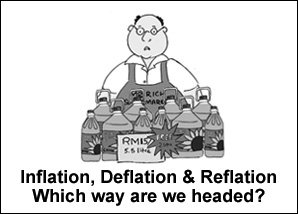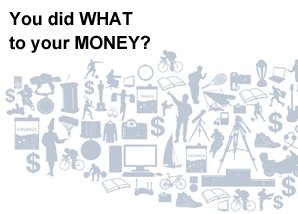Debt Done Right
It may seem counter-intuitive – taking on more debt to build wealth – but there are times when borrowing to invest may be a useful strategy in growing your wealth.
Borrowing to invest, also known as leveraging, is about using debt to acquire assets, such as stocks, bonds or real estate, that may offer higher returns than the interest on the loan1.
Leveraging has its benefits as well as risks. Let’s take a look at the benefits first. For one, it fast-tracks wealth accumulation. An investor may take up a loan to invest a larger sum of money at one time instead of making smaller contributions spread over a period of time. This allows the investments more time to grow over the investment period and take advantage of long-term compounding returns. For example, an investor may contribute RM500 monthly to his or her portfolio and grow it slowly over 10 years. On the other hand,an investor may borrow RM60,000 and invest from day one and repay the loan over the next 10 years. Both methods are not wrong but the strategy with leverage bears more risk. However it may also be potentially more rewarding2.
With leveraging, investors may also take advantage of investment opportunities which they may not be able to participate in should they rely on their own income or savings. To see how leveraging works, let’s take a look at this infographic3 which depicts a simple comparison between investments with and without leverage.
However, leverage is not to be taken lightly as it has the power to potentially amplify gains or magnify losses. Borrowing irresponsibly may leave an investor with a huge amount of debt which he or she has no means to service4. Furthermore, should interest rates increase it may cause the monthly repayments to go up and decrease potential returns. Lastly, regardless of the performance of the investment, the investor is obligated to repay the loan and applicable interest. If the investor defaults on the loan, it may affect his or her credit standing and hamper future borrowing efforts5.
You may already be leveraging without knowing it
A mortgage is a prime example of leveraging. While the investor may be able to pay for a property outright with cash, it may not be the best option. Taking on a home loan enables the investor to purchase the property without depleting his cash reserves. By taking on the loan, the investor frees his/her cash to invest in other assets.
A credit card balance transfer is another example, where the credit cardholder pays off higher credit card interest rates via a transfer of his/her outstanding card balance to another bank’s credit card offering lower interest rates.
Besides that, leveraging could be for investments that are intangible such as a student loan. In such instances, the returns may be hard to determine but could be well-worth the investment.

How do you leverage?
Before you contact your bank for a loan, you may want to consider these few conditions where leveraging may be suitable for your financial situation:
You have a home
If you have a fully paid up property, you can consider re-mortgaging your home for cash*. Or consider refinancing your current home loan to a larger loan amount to take advantage of your property’s rising value*. For example, you took a RM500,000 loan 10 years ago and have paid up RM200,000. Your property is currently valued at a market rate of RM800,000. You may consider refinancing your property at a higher loan amount, such as RM600,000, which will leave you with RM300,000 to invest. If you are considering refinancing, you may want to take a look at HSBC’s HomeSmart which offers you the flexibility to pay more when you can or withdraw the excess payment to re-invest when opportunities arise.
* Refinancing is subject to the bank’s credit evaluation and/or approval.You are catching up on wealth accumulation
If you started a little late on saving for wealth accumulation, leveraging may help you catch up by potentially amplifying your returns. You may consider borrowing to invest in a diversified range of products such as stocks, unit trusts and/or structured investments to help meet your saving shortfall. However, you are also putting your funds on the line if your investments do not perform as expected.
Disclaimer: HSBC and the HSBC Group are not providing any financial or investment advice. The information is not and should not be construed as an offer or solicitation, or recommendation, to acquire or dispose of any investment and should not be considered as investment advice. Any person considering an investment should seek independent advice on the suitability or otherwise of the particular investment.
You have cash
If you are cash rich but have very few assets, you can consider leveraging to build your portfolio. For example, if you have RM100,000 in cash, you may use the funds as cash collateral to obtain a secure line of credit. You may withdraw from the credit line as and when you need to, such as when investment opportunities arise, as long as you do not exceed the maximum credit amount set by the bank. Besides that, having a steady flow of personal income is crucial as you must be able to comfortably manage the interest or loan repayments. You may want to build in a buffer as well just in case interest rates go up and your repayments follow suit.
Leveraging may not be suited for everyone and is best left to experienced investors with the necessary knowledge to make sound investment decisions. Due to the higher risk of this strategy, you would need a higher risk tolerance and the ability to absorb potential losses. Lastly, leveraging is not a get-rich- quick scheme and you would want to consider investing for the long term. When managed responsibly, leveraging may be a useful tool in helping you potentially build and grow wealth.
Checking off the pros and cons of financing7
Leveraging has its risks and must be entered into only after careful consideration. The key is to take on debt responsibly, well within your financial and emotional capacity, as a part of an integrated financial plan. You may consider using this checklist to assess your financial stand before taking on additional debt.
![]() If you take on new financing, do you have enough income to cover all your regular expenses, other financial commitments and contingencies?
If you take on new financing, do you have enough income to cover all your regular expenses, other financial commitments and contingencies?
![]() Does leveraging suit and meet your needs and circumstances?
Does leveraging suit and meet your needs and circumstances?
![]() Are your emotions in check? (Are you being swayed by the excitement of investment schemes with high returns without fully understanding their risks and returns?)
Are your emotions in check? (Are you being swayed by the excitement of investment schemes with high returns without fully understanding their risks and returns?)
![]() Will leveraging increase your overall debt burden and how long can you hold on to this investment? (Should returns be less than expected, will you be able to maintain the financing and wait to sell at better rates? However a longer financing term may also expose you to higher risks in the long-term)
Will leveraging increase your overall debt burden and how long can you hold on to this investment? (Should returns be less than expected, will you be able to maintain the financing and wait to sell at better rates? However a longer financing term may also expose you to higher risks in the long-term)
![]() Are you diversified enough to balance out your risk? (Are you putting all your eggs in the same basket?
Are you diversified enough to balance out your risk? (Are you putting all your eggs in the same basket?
![]() Have you consulted a financial adviser to help understand all pros and cons?
Have you consulted a financial adviser to help understand all pros and cons?

Source: 1 The Globe and Mail, “Leveraging debt to boost returns” August 23, 2012. 2 Lending Tree, “Build Wealth: Profit from Leverage” on Life123.com (undated). 3 Infographic developed from information based on Robert Kiyosaki’s “Debt of Gratitude” published on www.richdad.com, May 24, 2011. Currency is denominated in Malaysian Ringgit. The example contained is for illustration purposes only and assumes that the investor is eligible for all loans applied for and all properties purchased are rented out at RM800 per month. It does not take into account the risk of non-tenanted properties, default on rental payments, fees, charges or any other expenses incurred to service the properties. 4 The Options Insider, “Leverage is Great – When Used Responsibly”, August 26, 2011. 5 The Great-West Life, “Investment Lending” (undated). 6 www.investopedia.com, “Definition of ‘Leverage’ (undated). 7 Adapted from Talbot Stevens, “Responsible Leverage Checklist”, on www.talbotstevens.com (undated) and Bank Negara Malaysia, “Guidelines on Responsible Financing”, February 24, 2012.
July 2013


 LIKE THIS ARTICLE?
LIKE THIS ARTICLE?





















